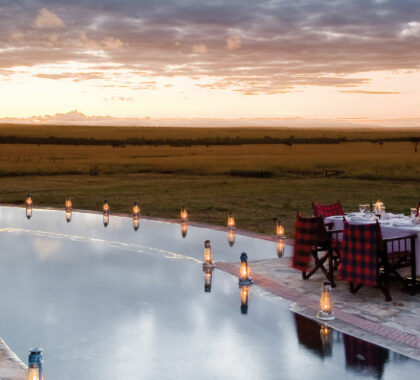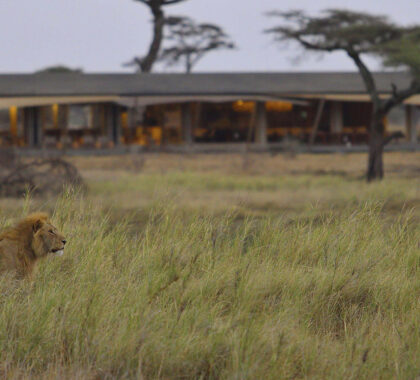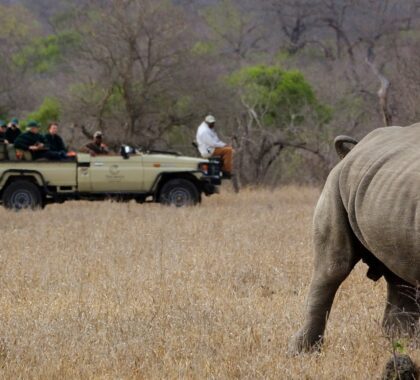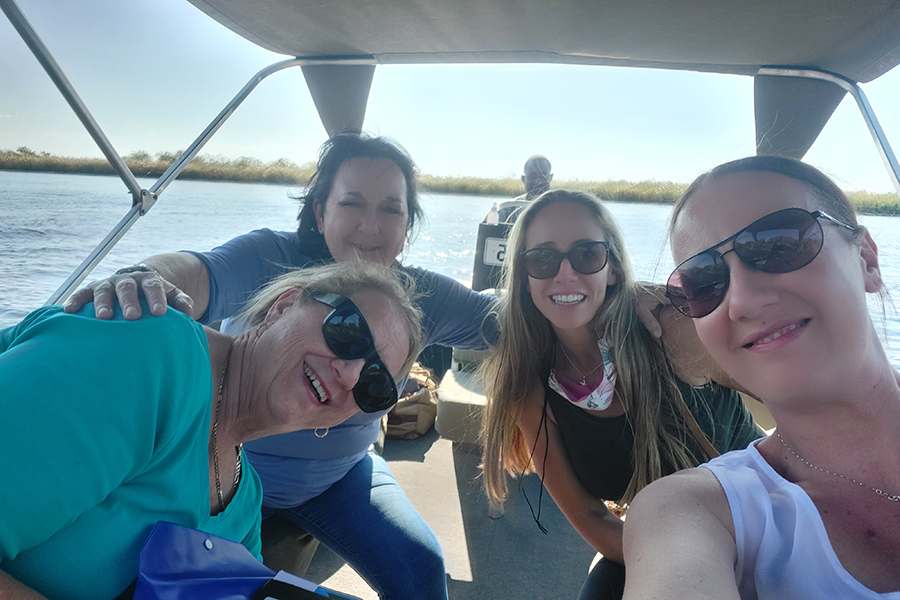Estimated reading time: 13 minutes
Over the last few years, the travel industry has seen disruption on an unprecedented scale. In Africa, with a lack of international tourists throughout the pandemic, many holiday and tour providers struggled. However, the view today is more positive. Travellers are returning to Africa in full force and they’re keen to make up for lost time. Demand for safaris is soaring back to pre-covid levels, but it comes with a new, fast-growing interest in sustainability and eco-tourism.
Using internal data, we’ve created our very first Annual African Safari Travel Report to outline key trends within Africa’s safari industry. We aim to produce the report annually, providing insights into the market for travellers, tour operators, and more. Unless otherwise stated, all data comes from our enquiries and bookings between January 2021 and December 2022 – creating a sample size of more than 40,000 records.
Firstly, Who Are We?
Go2Africa is a multi-award winning African-based travel company, specialising in safaris. Since 1998, we’ve been committed to building first-hand knowledge of every destination, lodge and activity we recommend from our 3,000+ safari partners. We travel the length and breadth of every destination, so we can share first-hand experience and unbiased advice, and ensure that every part of your itinerary is tried-and-tested.
Spread across Africa, from Nairobi to Cape Town, our team of safari experts are all African-born and raised. We’ve grown up on game reserves, worked as head rangers and lodge managers, and spend our own holidays on safari; we understand what goes into making every trip to Africa a once-in-a-lifetime experience.
1. Search Trends
African Safari’s Post-COVID Recovery
The global pandemic significantly impacted the entire tourism industry. Yet, with many countries re-opening their borders, interest in travel has not only returned to pre-covid levels but has started to edge ahead. See, for example, the number of Google searches globally for African safaris over the past two years. Volume suffered a huge drop in early 2020 but has recovered well over the last 12 months. Between Q1 and Q3 in 2022, search volumes are:
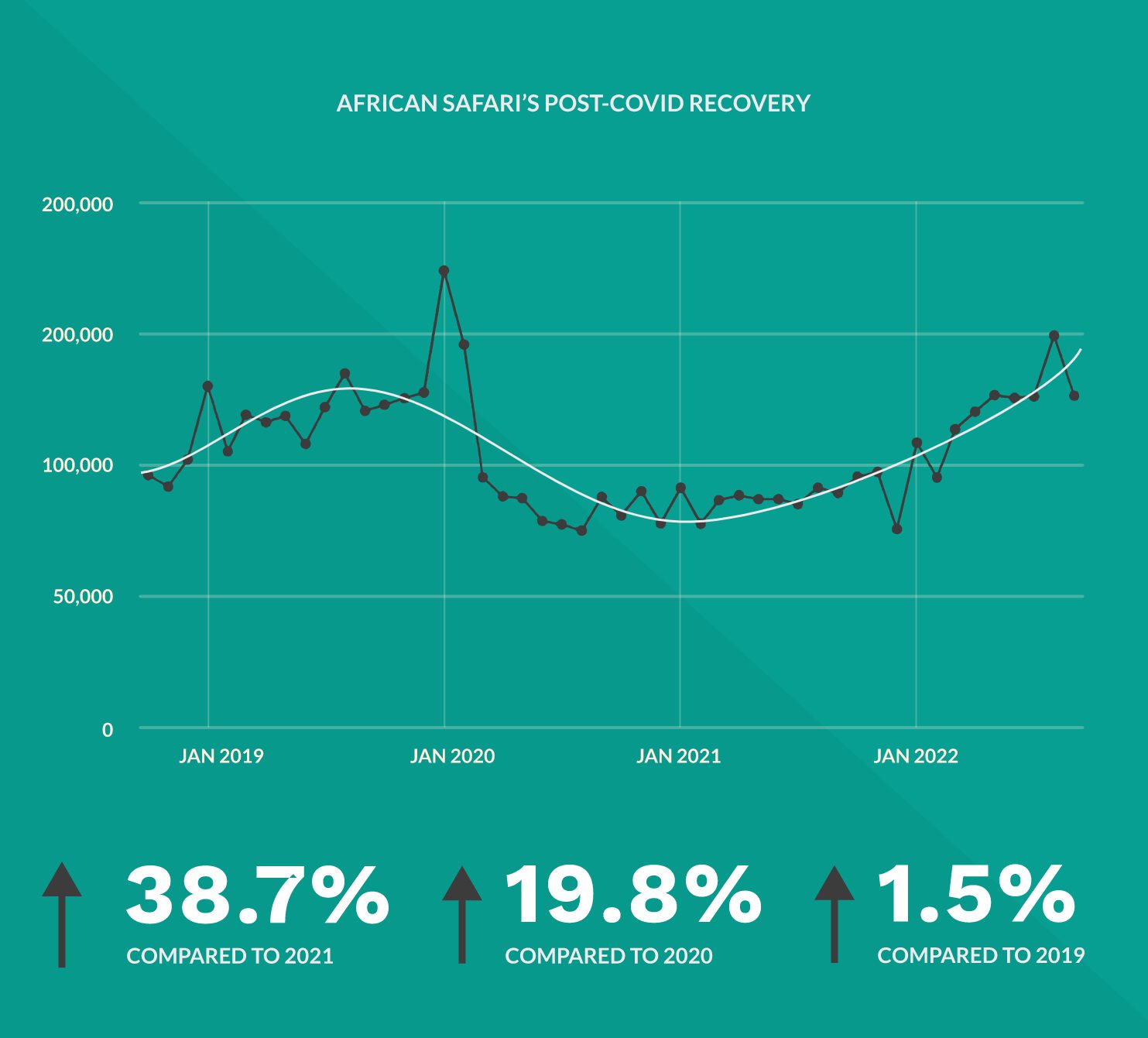
A Growing Demand for Sustainability
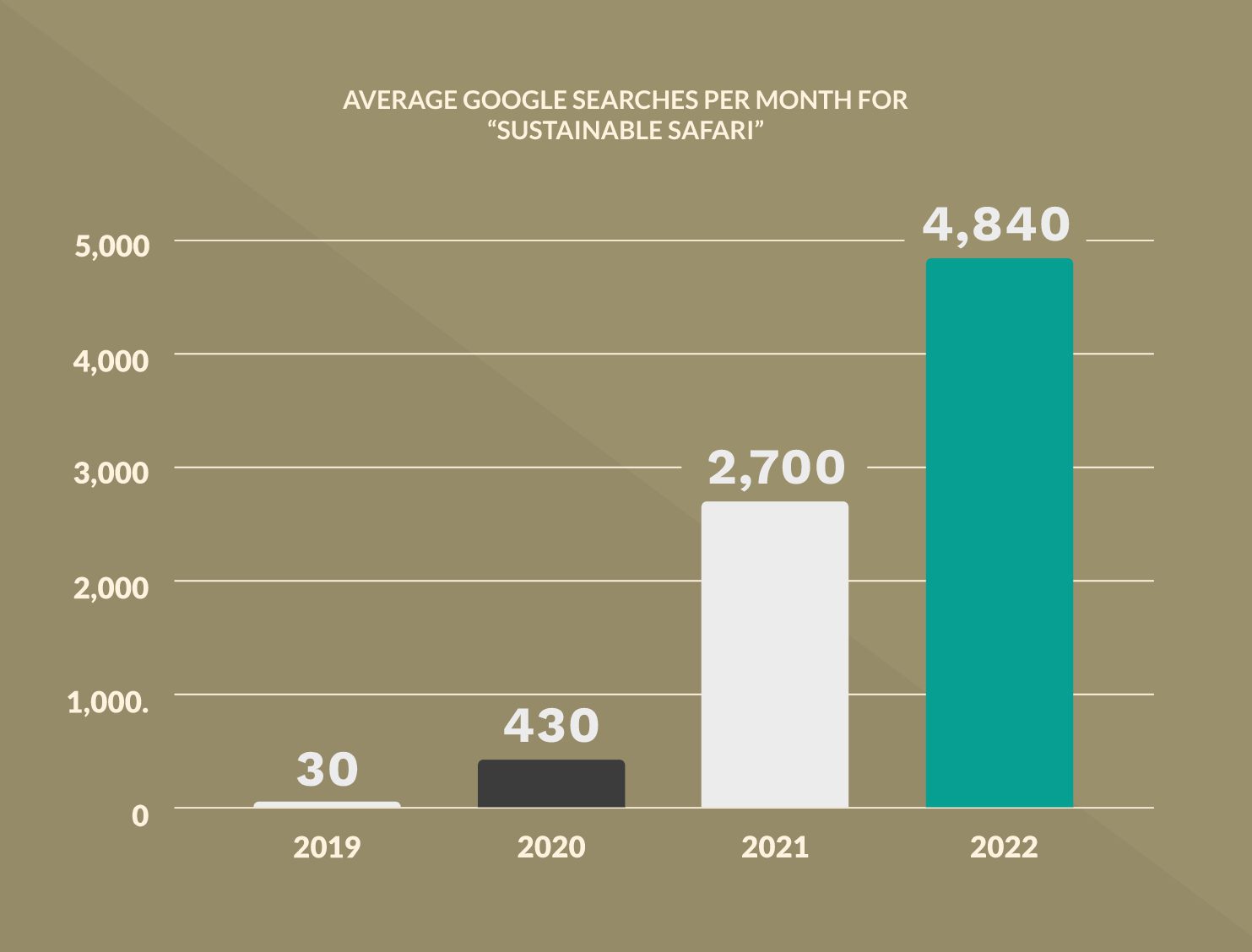
Sustainability is quickly becoming a key consideration in the decision-making process of travellers. This has become very evident in the safari industry, with global search volumes for ‘sustainable safari‘ proliferating each year – since 2019, interest has increased by 16,033%. This is a testament to the work of charities, organisations, governments, and local communities who have championed the importance of sustainability. And the effect comes back around as travellers’ changing desires then help drive the movement further.
Preserving and protecting Africa’s incredible biodiversity and beautiful landscapes continues to be one of humanity’s biggest challenges. Still, collectively, with changing attitudes, better education, and real action, we can do it.
For our part, we launched a series of Positive Impact initiatives this year, including:
- Supporting a fantastic collection of independent, innovative and inspiring community development projects.
- Working with partners to keep the environments we visit in pristine condition, and restoring those that have been negatively impacted in the past.
- Partnering with some of the pioneers on the front lines of protecting our wildlife.
2. Destinations
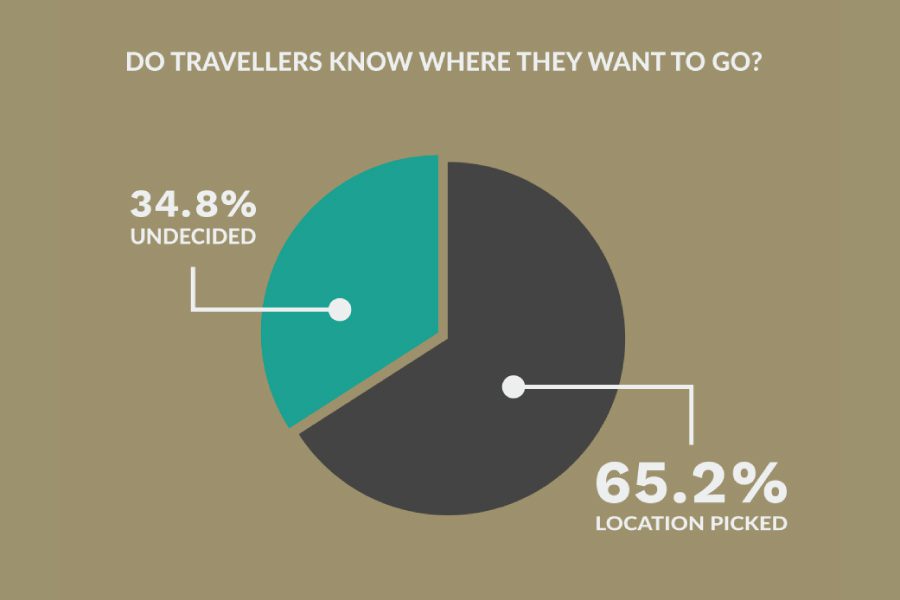
We analysed all of our enquiries between January 2021 and December 2022 (a sample of more than 40,000 records) to learn more about the destinations people want to visit. The first trend we noticed was that most travellers already have a destination in mind, but interestingly, over a third are undecided. Instead, these people rely on the guidance and support of their travel operator to determine where they should visit, including what’s new for African travel.
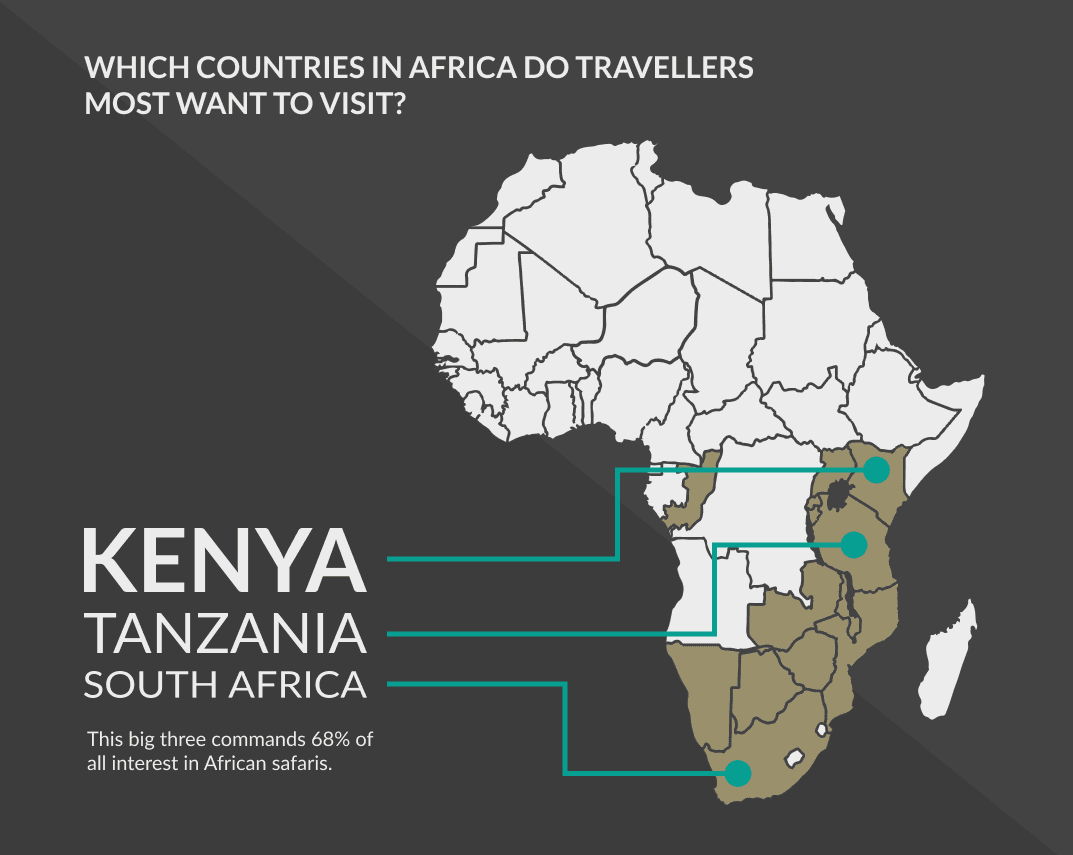
Kenya takes the crown as the most popular safari destination in Africa. However, it’s a tight battle for the top spot, with Tanzania and South Africa joining Kenya to form a ‘big three’. Together, these countries command more than two-thirds (68%) of all interest in African safaris.
Which Destinations are Growing in Popularity?
By comparing data from this year against 2021, we can see how the demand for each destination has changed. Naturally, all destinations have seen an increase in 2022 thanks to the easing of travel restrictions due to COVID. But, if we take the average increase (63.4%) as a benchmark, we can identify countries where the year-on-year change is above or below average.
South Africa and Rwanda have seen the biggest growth in popularity, with Zambia and Zimbabwe also trending above average. Meanwhile, despite being the most popular destination overall, Kenya has seen the lowest demand growth – suggesting travellers may be expanding their horizons.
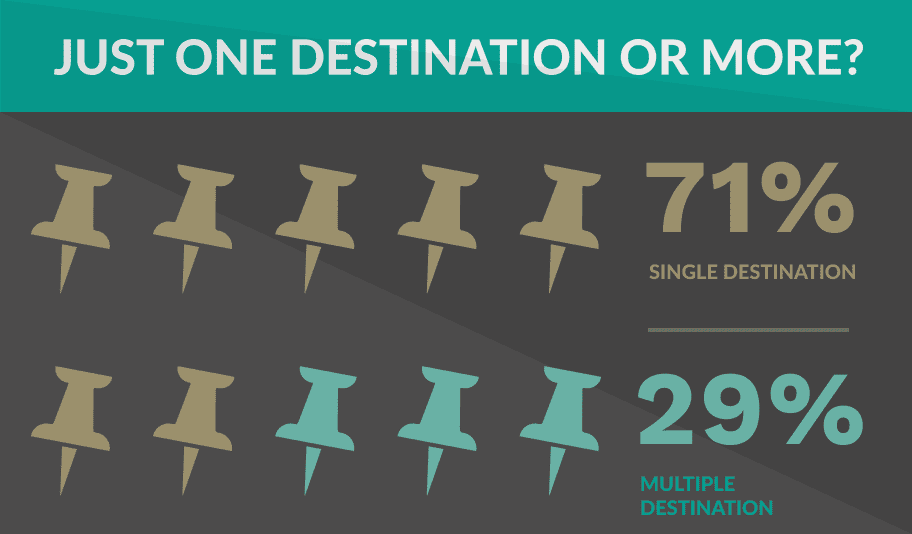
Most travellers only intend to visit one country during their trip. This is likely to keep costs down, as adding in more destinations means a longer trip, more travel and more accommodation, requiring a far bigger budget. In line with the growing demand for sustainability, it might also be that travellers intend to visit only one country to reduce their carbon footprint. However, we should remember that much of our data overlaps with the COVID-era, when travelling to just one country was difficult, and multiple even more so. It will be interesting to see if the split changes as we recover fully from COVID.
3. Travellers
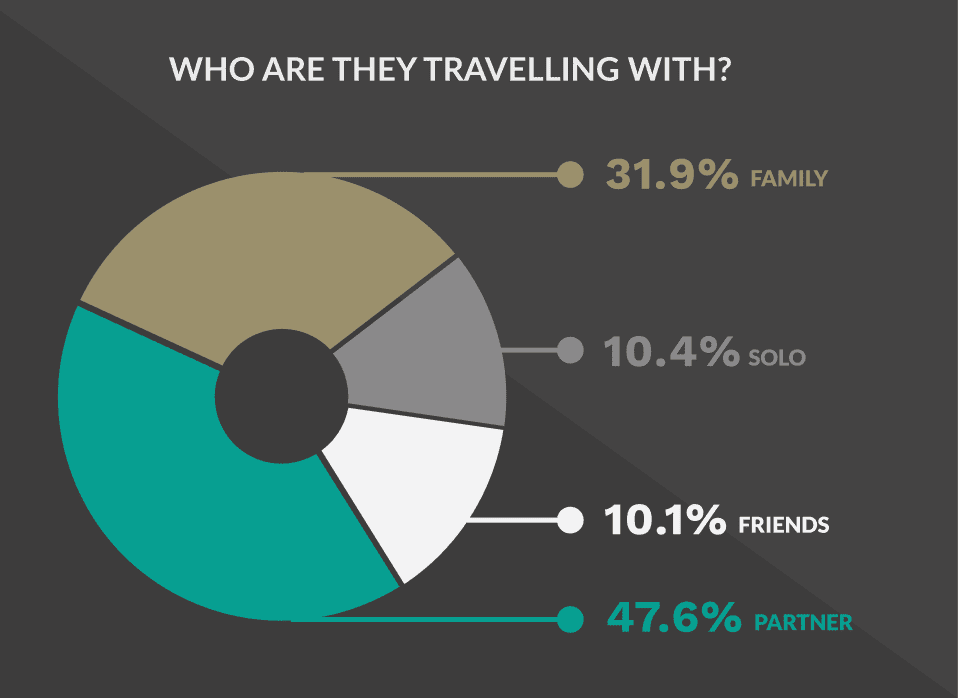
Most travellers go on safari with their partner – from newlyweds on a once-in-a-lifetime honeymoon to retirees exploring the world.
What is the Budget Per Person?
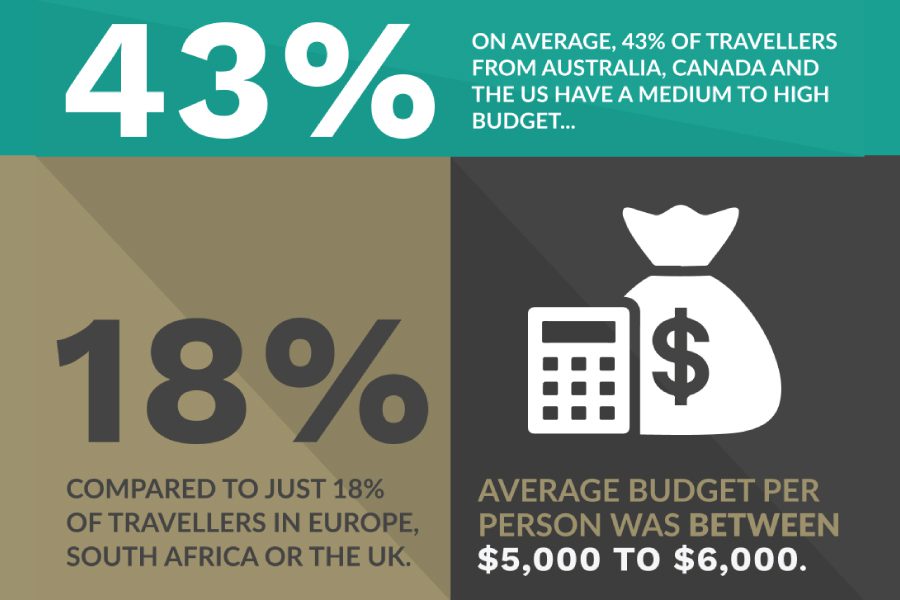
Some of the most common questions we receive from travellers is about budgets: how much will they need per person and how much does a safari cost? The truth is that a safari package can be tailored to fit various budgets. But we thought it might be useful as a guide for those considering a safari to see how much most people budget for. After analysing over 40,000 enquiries from the past two years, we found the average budget per person was between $5,000 to $6,000.
When we broke this down by currency, the split between each budgetary group revealed interesting results. On average, 43% of travellers from Australia, Canada and the US have a medium to high budget, compared to just 18% of travellers in Europe, South Africa or the UK. The increased distance may have a role to play – with higher travel costs and, perhaps, an appetite to stay longer from those travelling further.
When Do They Go?
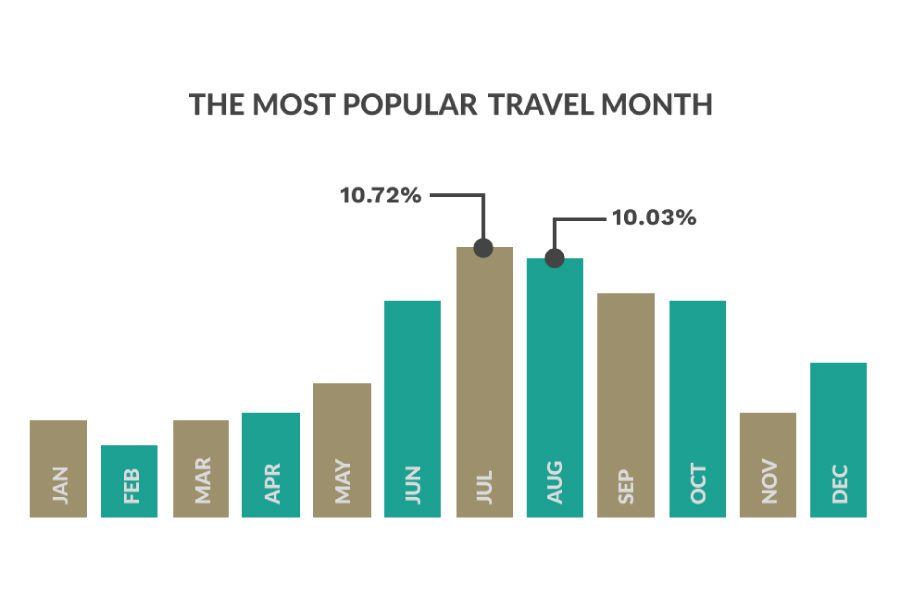
The most popular travel month is July, closely followed by August – the high season for safari. This falls in line with the summer holiday season for Northern Hemisphere countries, where most travellers come from. But, perhaps more importantly, it’s the winter dry season for many safari destinations – which is traditionally a better time for sightings as the bush thins out. It also aligns with major safari attractions like the Great Migration’s river crossings, when hundreds of thousands of wildebeest and zebra move from Tanzania’s Serengeti to Kenya’s Masai Mara, famously dubbed “The Greatest Show On Earth”.
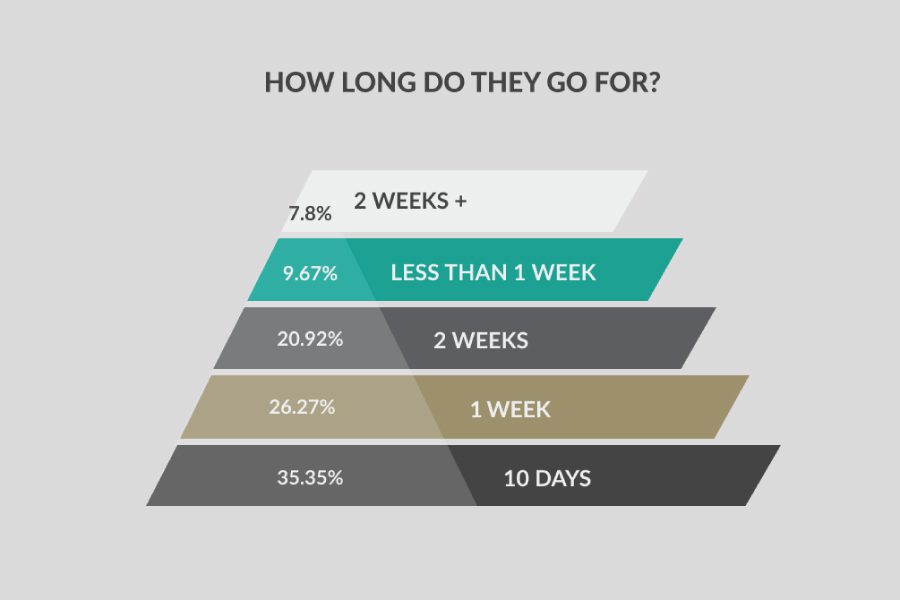
The most popular choice for trip length was ten days, with 35% of all travellers choosing this option. A ten-day trip leaves just enough room to balance a safari with some relaxing downtime, whether that’s a few days in the sublime paradise of the Seychelles or along the lesser-known but equally stunning beaches of Mozambique.
How Long Does Planning a Safari Take?
According to our data, the planning and booking process takes an average of 41 days (time between initial enquiry and booking).
If you’re interested, it turns out South Africans are the quickest at planning and booking – completing it in just 17 days. The Dutch are the slowest, taking 97 days on average!
It’s no surprise that planning a safari takes a bit more time and effort than a typical holiday, but that’s part of the fun. Plus, we’re here to help. Our experts can curate the trip of a lifetime with you over a few video calls, ensuring everything is accounted for.

How Far in Advance do Travellers Book?
Travellers from the US book furthest in advance, with an average of 217 days between booking and their holiday. They’re closely followed by travellers from Singapore, Australia and Canada. We already know that distance plays a role in budgets, so it makes sense that it also impacts how far in advance a trip is booked – giving more time to plan and save.
The Big Attraction? The Big 5…
By analysing our enquiry data, we pulled out every mention of what people wanted to see or do on safari. Historically, Africa’s Big Five – the lion, leopard, rhino, elephant and buffalo – have always been the main attraction. This remains the case today, with over a quarter of all travellers telling us they want to see the Big Five in the wild.
We found the most popular were:
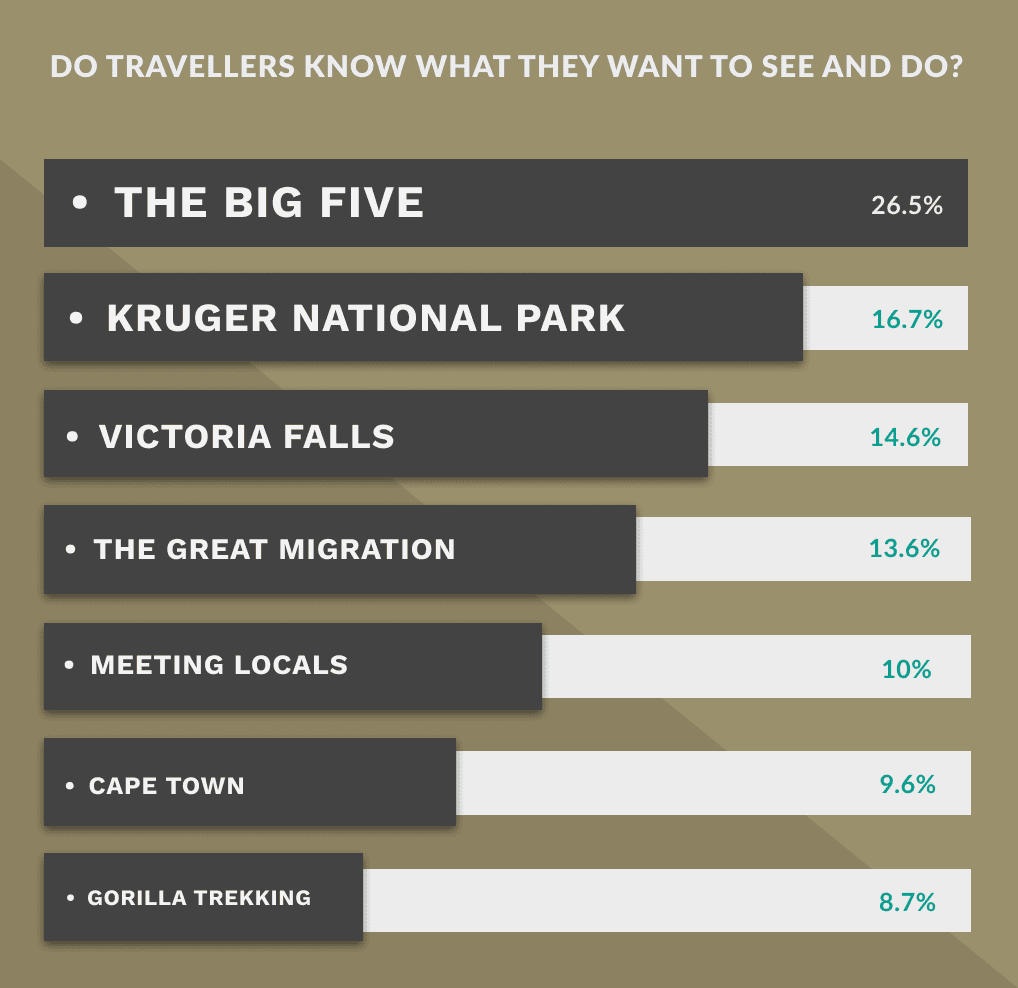
4. Country Comparison
Earlier on in the report, we found that the budget per person differed based on the traveller’s home country. We found this interesting and wanted to dig further into it, so we consulted our bookings data.
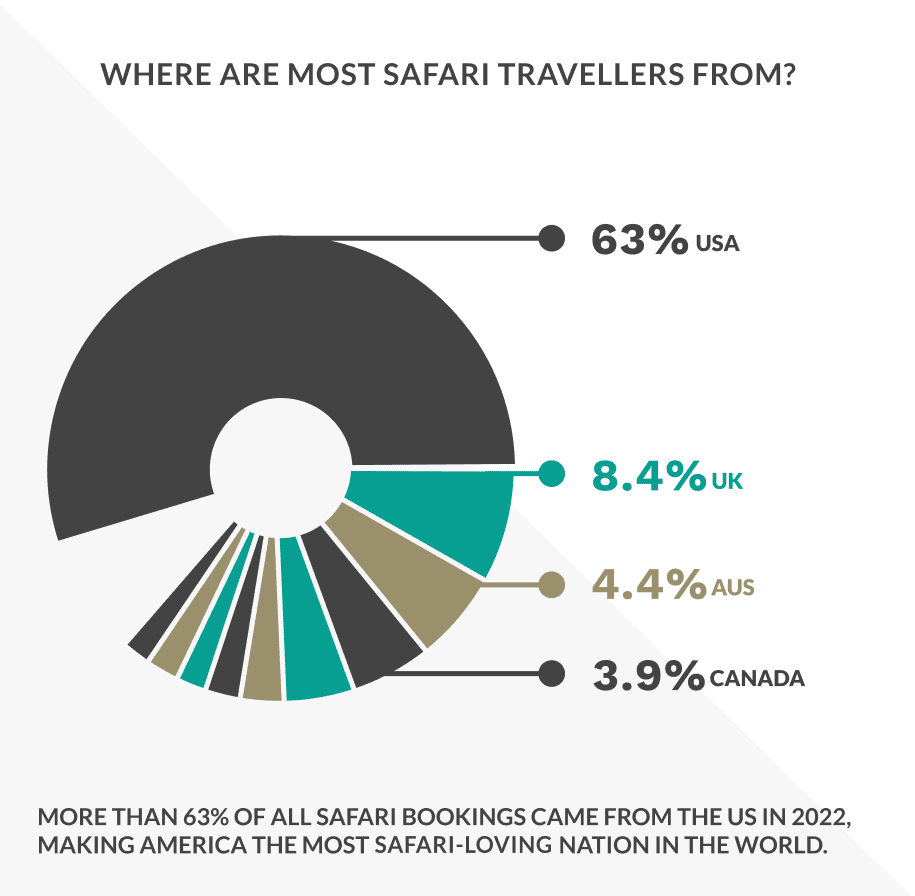
More than 63% of all safari bookings came from the US in 2022, making America the most safari-loving nation in the world. But where in America truly loves safari the most? Well, according to our internal data, most enquiries come from California. As the most populated state in the US, that’s no surprise. So, if we account for differences in population size by using enquiry rate (the number of enquiries divided by web traffic), the most safari-loving state in the US is Rhode Island!
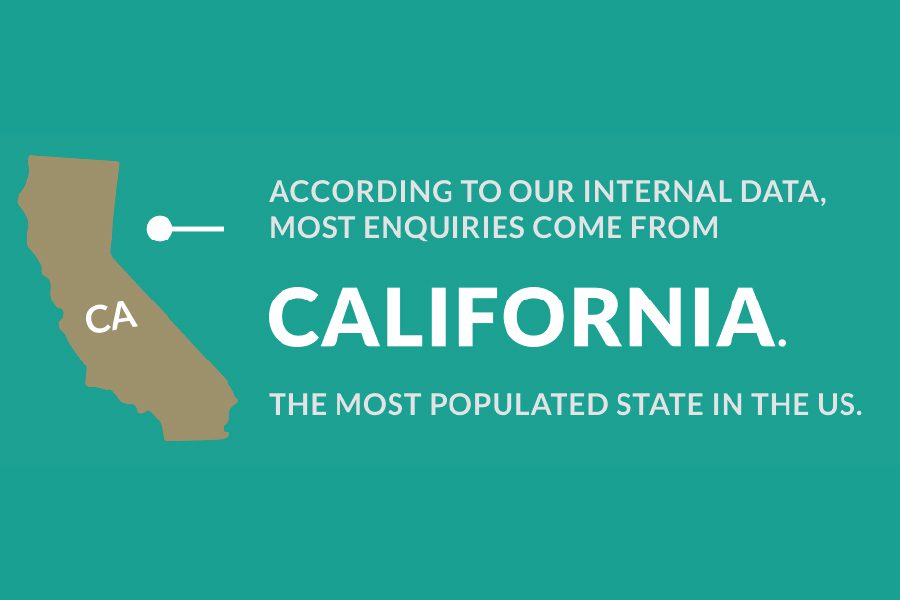

Who Spends the Most on a Safari?
Despite booking the most trips, the US does not spend the most. They’re beaten to the top spot by neighbouring Mexico. It’s worth noting the average booking value across all countries is $16,270 – this isn’t per person but rather the entire trip value. The ten countries that spend the most on a safari are as follows:
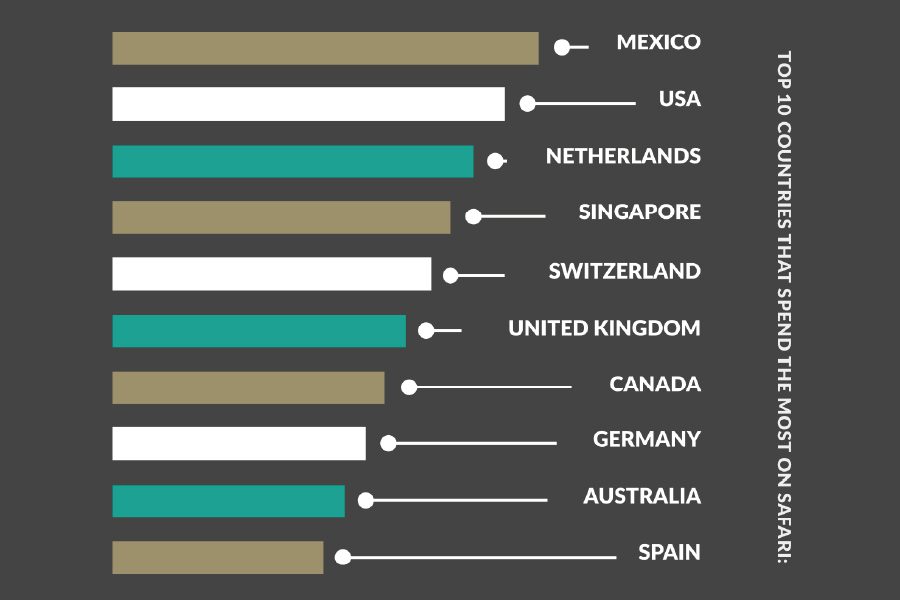
Download our Annual African Safari Travel Report:
For the full PDF version of our Annual African Safari Travel Report, you can download it here:
Ready to Plan Your African Safari?
Get in touch with our team of Africa Safari Experts to help tailor-make a trip that’s right for you:

